250 Dutch Proverbs – lesson 04
Transcript of the video lesson (scroll for more text):
Welcome to my video course “250 Dutch Proverbs”. I made a selection of proverbs and sayings that anyone who learns Dutch should know. The course consists of 25 lessons. In each lesson, I explain the meaning of 10 proverbs or sayings.Subtitles are available for each lesson. You just push the CC button in YouTube. The transcript of the lesson you find on Learndutch.org.
Let’s start with lesson 4, containing proverbs 31-40.
Proverb 31 “aangeschoten zijn”
Literally: being shot. But the meaning is: being tipsy. Let’s say after beer number 4.
Proverb 32 “door de zure appel heen bijten”
Literally: bite through the sour apple. This means that you have to go through something difficult, uncomfortable for a moment. Afterwards it gets better.
Proverb 33 “er niets van bakken”
Literally: not baking anything from it. You use it when someone is absolutely not capable of doing something. This expression is also used in sporting contests, when someone is dramatically underperforming.
Proverb 34 “uit je dak gaan”
Literally: to go out of your roof. Attention, from the English language you perhaps expect it to describe a sudden extreme increase, or to get angry. But it is none of these. In Dutch it means to get crazy. It can be of happiness, but you can also use it when having a party.
Proverb 35 “er geen gras over laten groeien”
Literally: not to let the grass grow over it. The meaning: to take immediate action. You can use the expression when someone very quickly converts an idea into action, and goes for the full 100% for it.
Proverb 36 “de honden lusten er geen brood van”
Literally: the dogs don’t like its bread. The meaning is that it is just too bad, too terrible, and too scandalous. Even for those, who are very flexible in their ethics, this is just unacceptable.
Proverb 37 “de kat uit de boom kijken”
Literally: to watch the cat out of the tree. This proverb you use, when someone is in a new situation and decides to quietly explore the situation first. So this is the opposite of taking the leadership role from the first moment.
Proverb 38 “er is geen kip”
Literally: there is no chicken. And this simply means there is nobody.
Proverb 39 “het mes snijdt aan twee kanten”
Literally: The knife cuts on both sides. It looks like the English expression “to cut both ways”. But it is actually not the same. In Dutch you use it, when you talk about a measure that has TWO positive effects, in other words a win-win situation. While in English you use it to address it has two effects, not necessarily positively, and often even a positive versus a negative effect. So we are more optimistic!
Proverb 40 “de gulden middenweg”
Literally: the golden central path. In English the “golden mean”, referring to the ultimate compromise. The Dutch way of politics – also called the polder model – is based on finding the golden mean. We have a very diversified political landscape (12 parties in parliament, whereas the biggest party has always less than 30% of the votes). And we have numerous lobby groups who all have the legal instruments to influence decision-making. So, everyone has to be pleased, because there is never a majority for a certain one direction policy. Almost any decision in our democracy is the ultimate compromise. Whether that’s good or bad, that’s something else. On the level of single measures, you may reach maximum satisfaction amongst the parties. It is of course the question whether the overall policy is coherent. But I won’t make political statements within the course of this video lesson.
That’s it for today. You now know 10 more Dutch proverbs.
Let’s do a small exercise. Please take 1 of the proverbs we dealt with today, and think of a situation in which you could use that proverb. Write down that situation and the proverb, in the comments-section that you see below the video, when you watch it in Youtube. And I will personally comment, wether it is used correctly or not.
Please do not let the grass grow over it. Continue with the lessons. The knife will cut on both sides: you will understand the Dutch better in their talking, but you also know a lot more about how we think and our history because by the proverbs you understand a nation.Do not forget to share this video on social media, and to put thumbs up in YouTube.
See you back in lesson 5 of 250 Dutch Proverbs. Do not forget to subscribe to our youtube-channel. Just pust the button and you get new videos to learn Dutch every week. And of course visit our website where you can find much more course materials for learning Dutch and you also find there the transcripts of this lesson. See you next time !
